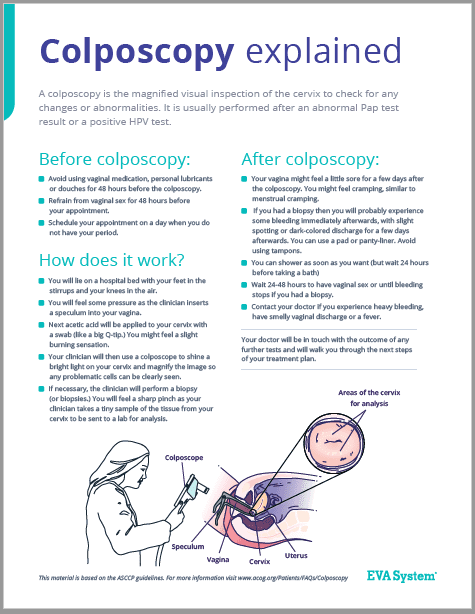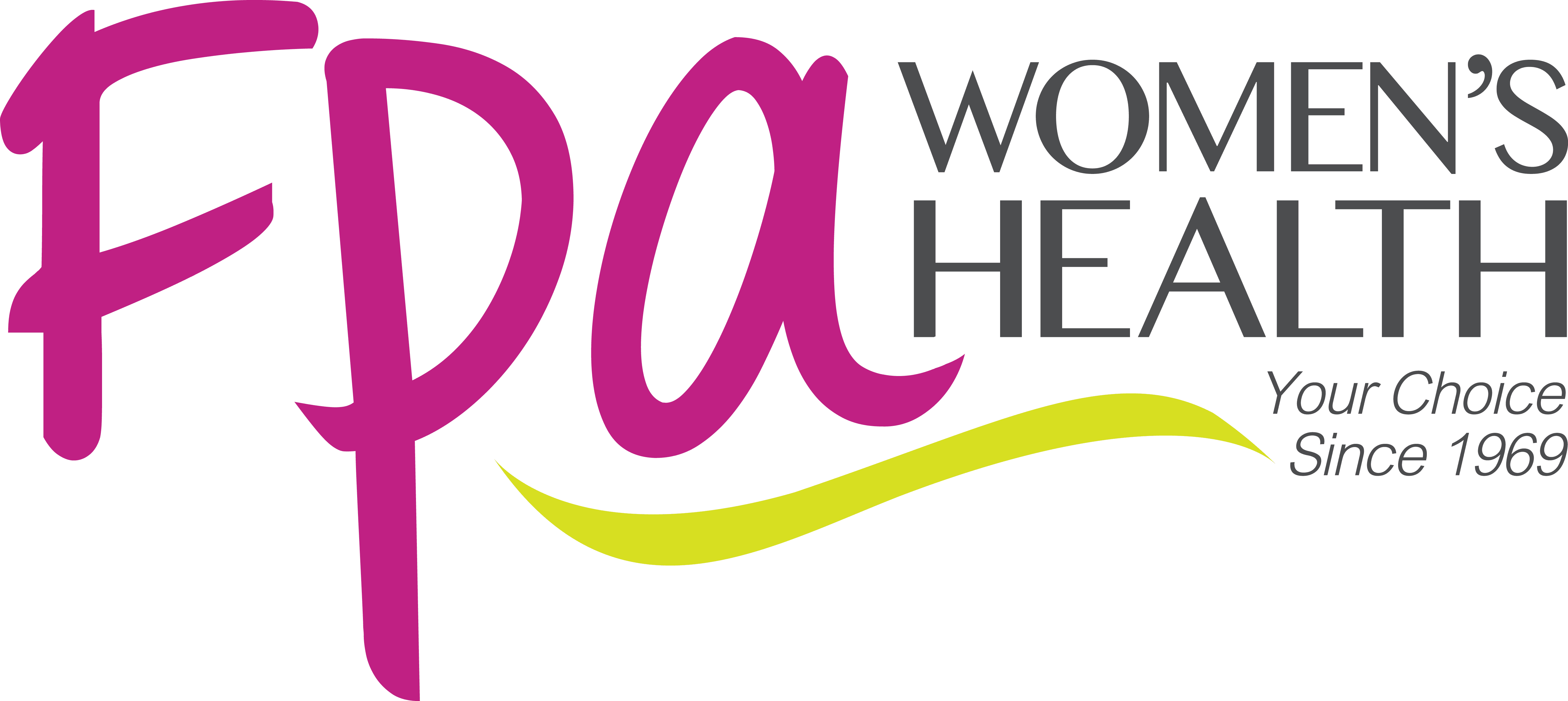What patients want, what physicians think and how to bridge the gap.
Recent policy changes have prioritized patient experience within healthcare. Gone are the days when a good bedside manner was an optional extra. Add in online reviews for medical practices, and physicians fall under pressure to deliver and enhance patient experience.
Many patients find colposcopy an uncomfortable and worrying procedure. After all, any test to rule out the presence of cancer can be cause for concern. But how much does patient understanding and engagement impact the colposcopy experience?
Physician Perspective
We surveyed 62 clinicians who perform colposcopy as part of their clinical practice to understand their impressions of patient experience. Our goal aimed to assess the extent to which patient experience and understanding played a factor for the physician when performing the colposcopy procedure.
We started by juxtaposing the main concerns of physicians with those of patients. Clearly, both were most significantly concerned about the final outcome of the test and the potential presence of cancer or precancerous lesions. Putting aside this obvious concern, we asked what physicians understood as their patients’ next most pressing concern.

- Understanding the procedure as they will experience it 21.2%
- How much pain/discomfort they will experience 77.3%
- whether the procedure is covered by their insurance 2.5%
What is the patient’s biggest concern?
Physicians understood the level of pain or discomfort a patient experiences during the procedure as the overriding patient concern.
78.1% of respondents assumed that patients considered pain or discomfort as their primary concern after the final result of the test. 20.3% assumed that patient understanding concerned patients the most. Interestingly, none of the respondents reported their patients as placing primary value on receiving the latest in medical care or the length of time the procedure would take.
- Making the procedure time efficient 3%
- Documenting the exam 10.6%
- Getting a perfectly clear image from your colposcope 31.8%
- Patient understanding of the procedure 27.3%
- Patient comfort during the procedure 27.3%
What is the physician’s biggest concern?
We asked physicians to share their biggest concern during a colposcopy performance besides correctly performing the procedure according to best practice guidelines.
Image quality was the major concern for the largest number of respondents in a single category at 31.3%.
Notably, physicians placed equal emphasis on patient understanding and patient comfort with 28.1% responding in either category. A disconnect exists between patient and physician priorities. Although physicians perceived comfort as the overriding concern for patients, physicians themselves did not consider this as their primary concern.
10.9% of physicians reported the burden of accurate record keeping astheir most pressing concern.
- Yes 60.6%
- No 39.4%
Do patients know what is involved in colposcopy?
It was interesting to note how physicians measured their patients’ knowledge of colposcopy.
40.6% of patients seem to be poorly educated about colposcopy.
59.4% of physicians surveyed found that their patients were well informed about the need for colposcopy and what takes place during the procedure. An interesting outcome when only 28.1% of physicians put their main emphasis on patient understanding. This would suggest that, for some physicians, a lack of patient understanding might not be a cause for concern.
- Medical Institutions websites (ASCCP, ACOG, NCI…) 22.7%
- Patient Associations websites (American Cancer Society, Cervivor.org…) 7.6%
- Other online materials 7.6%
- Printed materials 40.9%
- I am able to answer all my patient’s questions in our consultation 21.2%
How do physicians educate their patients?
We asked physicians what resources they recommended for patient education.
Most physicians provide printed materials.
Most provided printed materials (39.1%). 21.9% felt that they could respond to all patients’ questions during their consultation time. Another 23.4% recommended medical institution websites such as the ASCCP, ACOG or NCI. The remainder referred patients to patient association websites or to other online materials.
Patient Perspective
To assess patient perspectives on colposcopy experiences, we conducted interviews with 7 former colposcopy patients together with an analysis of commentary on the Reddit thread, ‘What I wish I knew before my colposcopy’, which collected the personal experiences of 31 women.
One might assume that only people with the most serious experiences comment in online discussions. Similarly to someone who experienced bad services will be more likely to leave a Yelp review. Interestingly, the comments displayed a whole range of experiences, from women describing it as ‘terrifying’ and feeling ‘like I had been raped’, and others advising yoga and breathing techniques to remain calm during the procedure, to those that considered it a positive experience.
The polarized range of experiences revealed that 29% of women reported feeling significantly uninformed about the procedure beforehand. The same same percentage stated that they felt well prepared by their physician. (The remaining 32% did not comment on their level of understanding prior to the procedure.)
Understanding shapes experience
There was nearly a 100% correlation between how positively the patients had experienced the procedure and their level of understanding. Women who had negative experiences described them in great detail. One respondent described, “What got me the most upset was seeing the instrument absolutely covered in blood. I am not a squeamish person at all, but seeing those scissor-y thing covered in my cervical blood really skeeved me out. ”
Many reported that it felt more painful than they had anticipated. One woman said, “Though I knew it was going to be a tissue sample, I thought that it would be more like a finger prick instead of anything super serious.”

Peer support
Women were quick to warn each other about the after effects of the biopsy. “For anyone else reading, my pain afterwards was bad. I felt like I’d been punched in the vulva, and also like I had been punched in the uterus. It was hard to walk afterwards, but I really did not want to spend another minute there so I scooted right out anyways).”
While understanding the process made some patients feel at ease, others, who did not fully understand the explanation they were being given, had a tendency to think they had cancer. “My doctor said on the phone that I had “pre-cancer” which wasn’t accurate and overly scary for no good reason,” one interviewee explained.
Get the Full Report
The patient Experience in Colposcopy
What patients want, what physicians think and how to bridge the gap.

Fact-sheet for Patients
The results of our research into
To make it even easier to educate your patients, we’ve produced a free downloadable one-page factsheet on colposcopy. You can print it as needed or even send it as an email attachment.
More Medical Research
Check MobileODT’s latest digital health insights, medical evidence
Academic Research
How patient experience affects medical outcomes
The experiences outlined by our interview subjects remain consistent with research studies.
Patients, feeling empowered by the medical process, have repeatedly demonstrated positive health and clinical outcomes, including improved disease management, effective use of health services, improved health status and medication adherence. In the case of our colposcopy patients, the sense of empowerment in the process provided an essential ingredient in creating a positive patient experience.
Repeated studies conclude by encouraging physicians to create patient engagement in their medical process to “cultivate patients’ confidence” as patients will “directly benefit from health gains of being activated and empowered.” Patient education improves medical outcomes across disciplines. In the Obstetrics and gynecology field, patient education and providing the necessary information about procedures has been shown to improve treatment success.
When choosing a format for patient education, healthcare workers should consider multiple factors. Our study group of OBGYNs demonstrated a preference for providing printed materials. This has the benefit of allowing patients to review the material after they have left the consultation. However, the use of printed educational materials has its limitations. It is vital that they are attuned to patient needs.
There was nearly a 100% correlation between how positively the patients had experienced the procedure and their level of understanding.
The danger of medical jargon
Many patients are disenfranchised by medical jargon. Engagement requires that patients understand the words used by healthcare professionals. While understanding seems an obvious component in patient education, the medical system sometimes relies on the assumption that patients comprehend a complex set of vocabulary.
‘Health literacy’ refers to familiarity with healthcare terminology. While general literacy plays a significant factor in the healthcare choices made by an individual, health literacy does not necessarily imply that a patient lacks overall literacy. They may be fully literate in general terms but lack an understanding of medical terminology or health concepts that inhibits their ability to successfully navigate the healthcare system.
We see this effect in our interview subjects who failed to fully understand the explanation of colposcopy testing for the potential to have cancer. Many described experiencing great fear or even terror prior to their colposcopy on the assumption that they had cervical cancer, rather than understanding that colposcopy was the next stage in a series of tests to rule out the possibility of cancer.
A study looking into the effects of health literacy recommended that all written material should take into account this phenomenon. “This means using simple words, short sentences with a bulleted format, and lots of white space. Medical jargon should be avoided… Emphasis should be placed on what the patient should do; unnecessary information should be avoided.”
Colposcopy can be emotional
Research addressing the specific needs of patient education in the colposcopy field found that patient anxiety about this procedure, in particular, might frequently continue even after the process was completed.
Colposcopy created strong emotional reactions among women, as we see from our interview subjects who chose an especially emotive language to discuss the procedure, even, in a few cases, likening it to rape.
Two forms of distress post-colposcopy were identified; short term and long term distress. Short term distress
As we found in our
An improved rapport with physicians could alleviate all these factors and surrounding concerns.
Interestingly, attending the clinic alone also contributed to patient distress. While only two of the patient experience summaries we analyzed mentioned bringing someone with them to the procedure, there is significant evidence
We see from this assessment of the anecdotal evidence that the degree to which patients are educated about and feel empowered in the colposcopy process has a profound effect on their experience of their colposcopy. Any patient education efforts must be tailored to the specific target audience to ensure that our messaging gives real value to patients.
The EVA Solution
Many technological advances can combine with traditional patient education methods to create an enhanced experience and increase patient engagement. The EVA System mobile colposcope is popular with clinicians. Incorporating a digital interface in a very compact portable casing, the EVA System sets patients at ease and engages them in the process.
A fraction of the size of a traditional colposcope, the EVA System is much less intimidating. This reassures patients of the relative simplicity of the colposcopy
procedure and they should not feel afraid.
The digital interface allows clinicians to take the EVA system out of the stand and show patients their cervix. Because it can sync with a video screen, the EVA allows you to show your patients the procedure as it’s happening.
Download the full report
GET IT IN PDFPatient Empowerment: Best practices from the field
Many physicians profoundly impact patients’ colposcopy experience through patient education. We spoke to two leaders in this area, each engaging with a different population within the patient spectrum.

Scripps Health
Dr. Bruce Kahn is a practicing OBGYN specializing in female pelvic medicine and reconstructive surgery (urogynecology) at Scripps Health. His patients tend to be affluent and well educated. As an expert colposcopist, he mainly treats more complicated cases that could not be treated by other clinicians at one of the satellite clinics.
Dr Kahn concurs that reading about colposcopy alone can provide patients with information but may not remove their fears. “About 90% of my patients are college educated,” Dr. Kahn explained.
“The vast majority have read about the procedure they are coming in for. But this doesn’t mean that they aren’t scared.”
A certain amount of concern is inherent in the colposcopy process. “Any time a patient receives an abnormal screening result, it’s quite shocking. Many are afraid that they have cervical cancer.”
His main challenge is putting colposcopy into context. “The education component is explaining that, for most women, having an abnormal pap smear does not mean they have cancer and that colposcopy is a diagnostic test that can prevent them from developing cancer.” He emphasizes that by virtue of being at a colposcopy procedure, they are less likely to develop full blown cancer in the future. “I tell patients that getting screening is the primary thing you can do to prevent getting cancer.”
The clinic nursing staff play a significant role in providing a high level of patient engagement. “I’m very fortunate to have a great team in place,” Dr. Kahn says. “It’s the nursing staff who are the first ones contacting patients and informing them that they had an abnormal Pap result.
”The level of compassion and the time taken to speak with patients, even during basic appointment scheduling, is essential to reducing patient fears.”
“The nurses explain to them exactly what will happen. They are able to walk them through the process. This greatly helps to reduce anxiety.”
In terms of furthering patient education in his direct interactions, Dr. Kahn uses predominantly online resources. “My patients are pretty tech savvy so they don’t need written materials,” he explains. Dr. Kahn provides his patients with a high level of medical information, usually referring them to the ASCCP website for further information. “I often show them the ASCCP algorithm so they understand exactly what is happening.”
One tip he gives to other physicians. “If I look together with my patients at a particular website, then I have them take a photo of the screen. That way they can look at it afterwards without having to look it up again.”

FPA Women’s Health
Dr. Rachel is the Medical Director at FPA Women’s Health. Her patient population is mainly comprised of patients coming from underserved communities. “Many of our patients do not have healthcare coverage when they come to us for care.” FPA Women’s Health helps patients apply under the Californian Presumptive Care provision, giving them healthcare benefits they otherwise would have done without.
“Most of our patients enter the FPA Women’s Health system because they have a gynecological crisis, be it abnormal bleeding, painful sex, a family planning issue or other complication,” Dr. Rachel explains. Once they have entered the system, they are then offered the opportunity to receive further preventative care.
FPA Women’s Health patient engagement initiatives fall into three categories; before patients reach the point of care, information about procedures, and post-care interactions. FPA Women’s Health has a robust outreach program, “Our main message is preventative care. We’re basically saying ‘Come in and see if you’re healthy.’”
“We produce a range of promotional materials for different populations, from referring clinicians to student organizations,” Dr. Rachel outlined. “We target specific messaging to each group. For instance, for students, we produce condoms with humorous slogans on the outside. They are a great way of starting the conversation about reproductive and women’s health issues.”
Patients’ understanding of their healthcare journey is emphasized. The FPA Women’s Health website contains descriptions of all services offered so patients can understand each stage in the process. Information is carefully presented to be detailed without causing alarm. “Some things are best discussed with a clinician face to face so that any questions can be answered directly.”
FPA Women’s Health is leading the way in patient engagement, offering a text messaging service to patients.
“We realized that we need to be communicating with patients in a format that’s easy for them, so we launched the text service.”
More than just an automated appointment reminder service, FPA Women’s Health’s program enables patients to text their clinic and receive direct input on the treatment.
A third party HIPAA compliant system maintains patient data security . To add to patient safety, their staff explain the implications of discussing medical matters via texting. “Patients are asked for consent, also over text, before our staff starts communicating with them.”
The text messaging program has succeeded on many counts. “Our staff and our patients all love it. It’s so much easier for them to use,” Dr. Rachel explains. Besides user buy-in, the program has helped improve appointment show rates and reduce loss to follow up.
Patient feedback and continued engagement plays a key factor in the FPA Women’s Health strategy. They created an exit questionnaire that helps them track patient satisfaction as well as show commitment to patients. Over time, this questionnaire has adapted to fit the needs of patients.
“We have an interest in in-depth data,” Dr. Rachel explained. “Our patients have an interest in reducing the time it takes the engage.” Initially, the survey consisted of a number of questions covering the colposcopy experience, but it had a low response rate. “Instead, we switched to a one question survey to be sent over text message. Now we ask patients to rate from 1 to 5 how good their experience was. We have increased our response rate from 1% to 16%.”
Conclusion
The Affordable Care Act has placed emphasis on patient engagement, highlighting this issue as more than just the latest fad. Rather, the ACA encourages physicians to engage patients as proactive and empowered participants in their healthcare.
Research shows that patients’ feeling of engagement and level of understanding has a profound effect on their experience of healthcare and their overall adherence to the recommended treatment plan. In the field of colposcopy, this is particularly true.
Our independent research shows areas for improvement between physicians’ understanding of patient engagement and that of the patient undergoing the colposcopy procedure.
Many dynamic tools available aid physicians, from patient focused educational materials to technological innovation that can bridge that gap between the two.